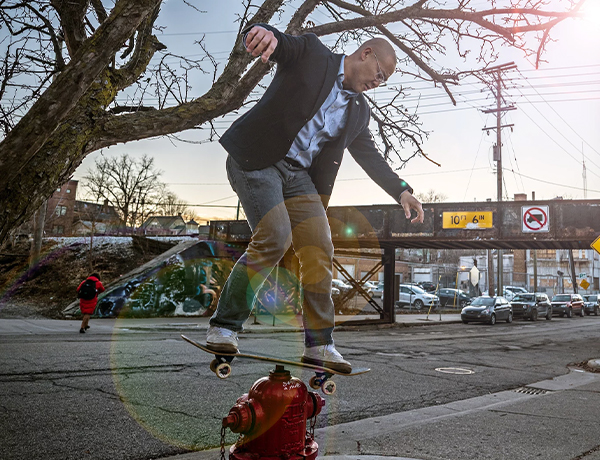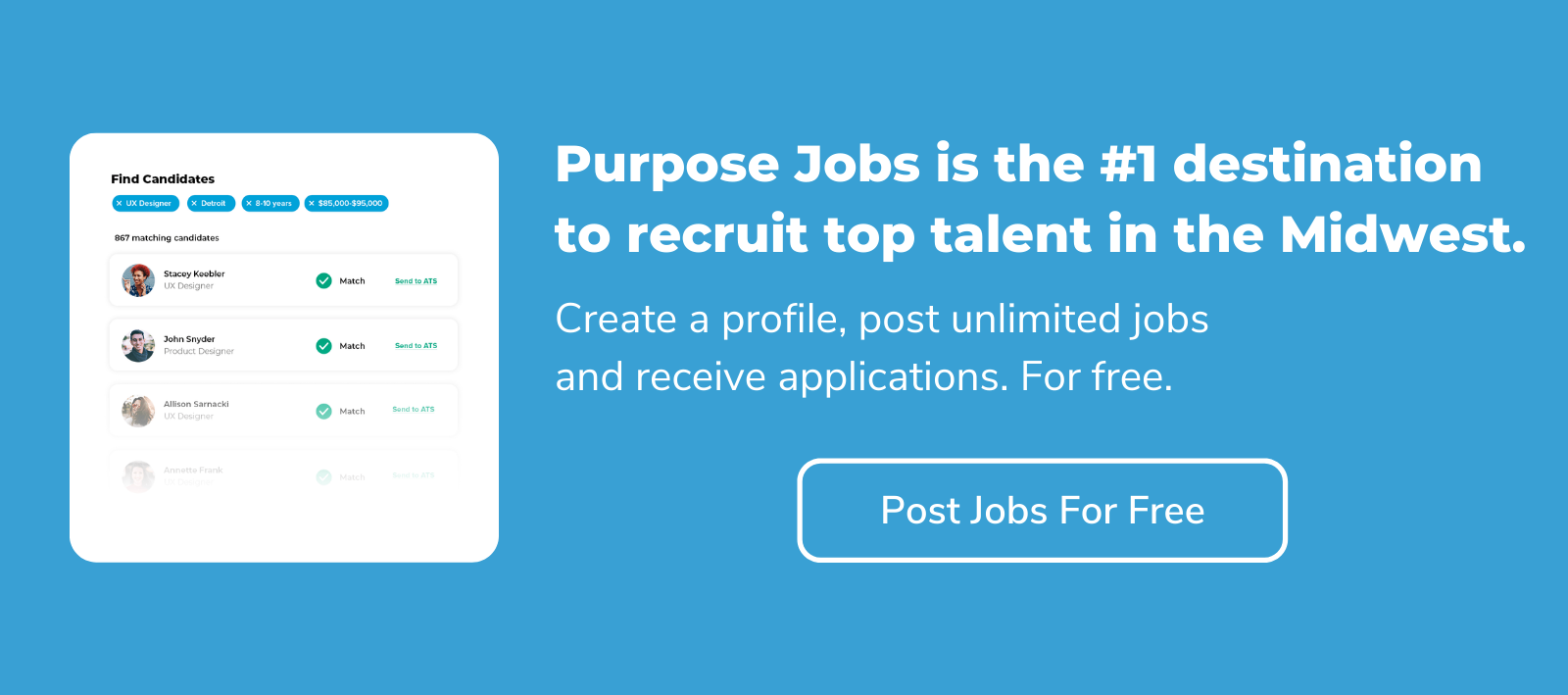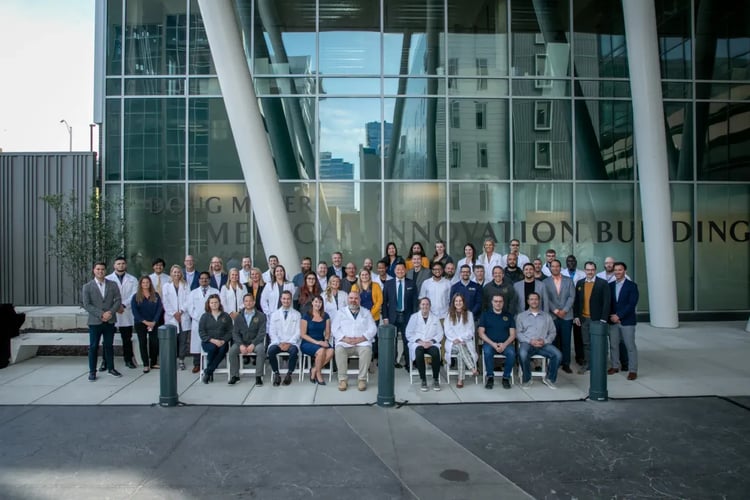Entrepreneurs are artists that produce at scale.
Beethoven used all twelve musical notes to compose his symphony number nine. Twelve tools, uniquely combined into 136,000 sounds.
For years in running a startup, I thought I could get by with only two notes: On, and off. On, as in running full tilt toward the next objective, and off, as in recharging (either sleeping or in front of the TV) so I can do it again.
Saying nothing about the myriad costs to my relational, social, mental and spiritual health, this binary way of living that I was so convinced was the secret to my success actually stagnated innovation within my business.
I’ve since learned that there’s a spectrum. On the one side is productivity, and on the other, creativity. 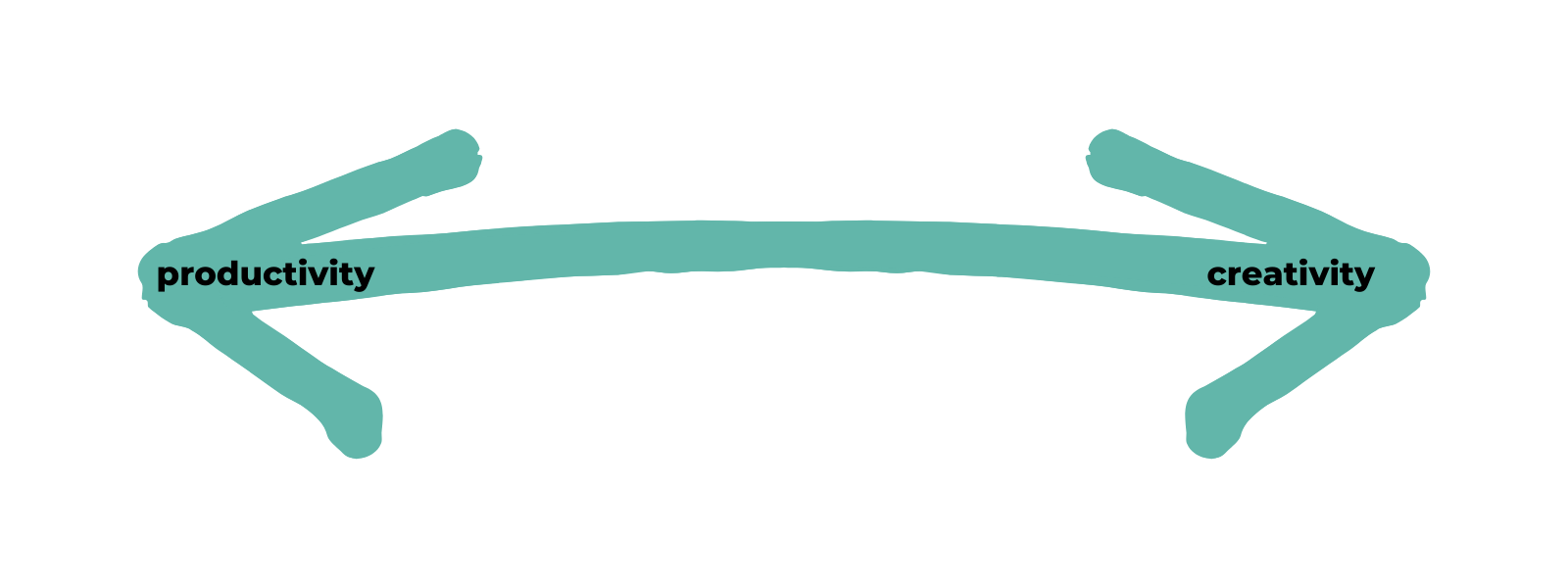 I was heavily tilted toward the productivity side of the spectrum, and I checked a lot of boxes. But slowly and surely our innovation stagnated. What had once been a font of creative output became an optimized machine driving ever more efficiently to where the puck used to be.
I was heavily tilted toward the productivity side of the spectrum, and I checked a lot of boxes. But slowly and surely our innovation stagnated. What had once been a font of creative output became an optimized machine driving ever more efficiently to where the puck used to be.
If this sounds like your average slow, legacy company, let me just say it’s remarkable how quickly nimble startups can turn into those if they’re not careful to nurture at least a little of the creative recklessness that they started with.
Legislating creativity vs the role of the leader
As a leader it’s up to you to model the behavior you want your team to exhibit. This means, yes, to increase the innovation at your company you may have to work in a slightly less regimented way yourself. Schedule less meetings. Intentionally give yourself some time to be creative. To do less, better.
Recall that this is where Google’s 20% time project comes from. The structure that birthed Gmail and so many other excellent products. And it’s not just tech companies — 3M’s 15% time actually predates Google’s 20% time, and was responsible for many scientifically developed manufacturing products still in use today. Google, 3M, Atlassian, and a metric ton of small businesses around the globe, when faced with a lack of innovation, structure unstructured time for their employees to putz around and try shit. And it works.
This type of legislated fun goes a long way, but if the leader of the organization doesn’t participate, it won't work. If she drives herself to the end of the productivity spectrum while telling her team to be creative, the senior leadership will pick up on that disconnect and err toward productive as well (as that’s what the boss actually values, they can see), regardless of what she says. Then, so will the people reporting to them, and on and on down the chain until it takes a countercultural effort by an employee to actually take advantage of their 20% time. Thus does a good cultural idea go down the tubes, with the leader often wondering why the heck people don’t just listen.
This dynamic (the leader’s behavior talking louder than any program she creates) is at the core of all culture work, not just innovation. While legislating creativity through unstructured fun-time is possible, it’s not practical unless you as the leader do the same with your own time.
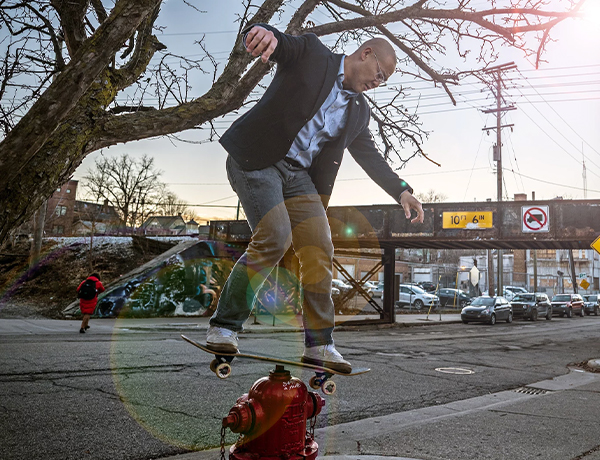 Dug Song, Co-founder & General Manager of Duo Security at Cisco, encourages his team to leave the office and "have a life." Dug likes to do that, too.
Dug Song, Co-founder & General Manager of Duo Security at Cisco, encourages his team to leave the office and "have a life." Dug likes to do that, too.
Of course this ebbs and flows, and there’s absolutely a time for extreme output in growing a company. But as a leader it’s important to monitor how you’re navigating the spectrum between creativity and productivity, and recognize the impact that has on your team, to ensure you don’t limit your success by getting stuck too far to one side for too long.
So… Fun... Shit. How do we do that again?
This may be remedial for some, but I can speak from experience in saying it’s not for all. It’s easy to optimize yourself so far toward productivity, toward doing the right thing, that you forget how to have fun (as in, play. As in, no goal, no winner, just, play. Like your kids do. Yes, that’s ok for adults, too).
So do we just deliberately not do work things for some arbitrary amount time and hope for the best? Or might it be possible to optimize for creativity?
The question seems sort of nonsensical for obvious reasons, but in my experience there are effective frameworks for creativity. In other words, there are more productive ways to be creative.
If you’re one of the lucky founders who knows exactly how to have fun, then please do it right now. Further, please talk about it on social media to at least the same degree as your productivity porn, to help normalize fun-having in the founder set. It’s needed. After all—the word "recreation" literally means to "create again."
On the other hand, if you’re convinced of the importance of a little fun in the name of innovation but wondering where to start, I have an exercise for you.
Exercise: Imaginary Lives
The Imaginary Lives exercise (modified from The Artist’s Way, by Julia Cameron) not only played a role in helping me rediscover the ten musical notes I had been missing — catalyzing a depth and breadth of creativity that is directly responsible for my newsletter, my coaching practice and many other projects — but it also made life more fun.
If you had five other lives to lead, what would you do in each of them?
I would be an astronaut, an author, a professional basketball player, a hippie, and a physicist.
You might be a cowhand, a psychic, a scuba diver, a cop, a writer of children’s books, a belly dancer, a painter, a performance artist, a history teacher, a healer, a coach, a scientist, a doctor, a Peace Corps worker, a psychologist, a fisherman, a minister, an auto mechanic, a carpenter, a sculptor, a lawyer, a painter, a computer hacker, a soap-opera star, a country singer, a rock-and-roll drummer.
Whatever occurs to you, jot it down. Do not overthink this exercise. The point of these lives is to have fun in them—more fun than you might be having in this one.
Look over your list and select one. Then do it this week. For instance, if you put down country singer, can you pick a guitar? If you dream of being a cowhand, what about some horseback riding?
Next week, do the next one. And so on.
The secret to this exercise is in realizing that you only have one life. You probably don’t want to sacrifice your current life en toto to go off and become a cowboy, but you won’t get another chance to experience the thrill of landing a lasso unless you take steps to make it happen now. Today. In this life.
Not only does this work wonders for juicing your creative capacity (which as a leader impacts more than just you) it is a great launchpad to a more nuanced, complex, and complete way of life.
About Ryan Vaughn:

Ryan is a leadership coach to entrepreneurs, the founder of Inside Out Leadership, and a serial entrepreneur. He has helped leaders from dozens of companies design a more conscious life, and make key changes to improve their performance and satisfaction.
Previously, as a 3x founder/CEO, Ryan scaled companies to over 11-million users across 45 states, raised over $20m from leading VCs, built teams of nearly 100 world-class employees, and acquired or partnered with nearly a dozen companies.
If you are interested in accelerating your growth as a leader, reach out to Ryan here. And if you liked this article, you can find more of Ryan's work at Second Mountain Startup, the popular weekly newsletter for purpose-driven entrepreneurs.

